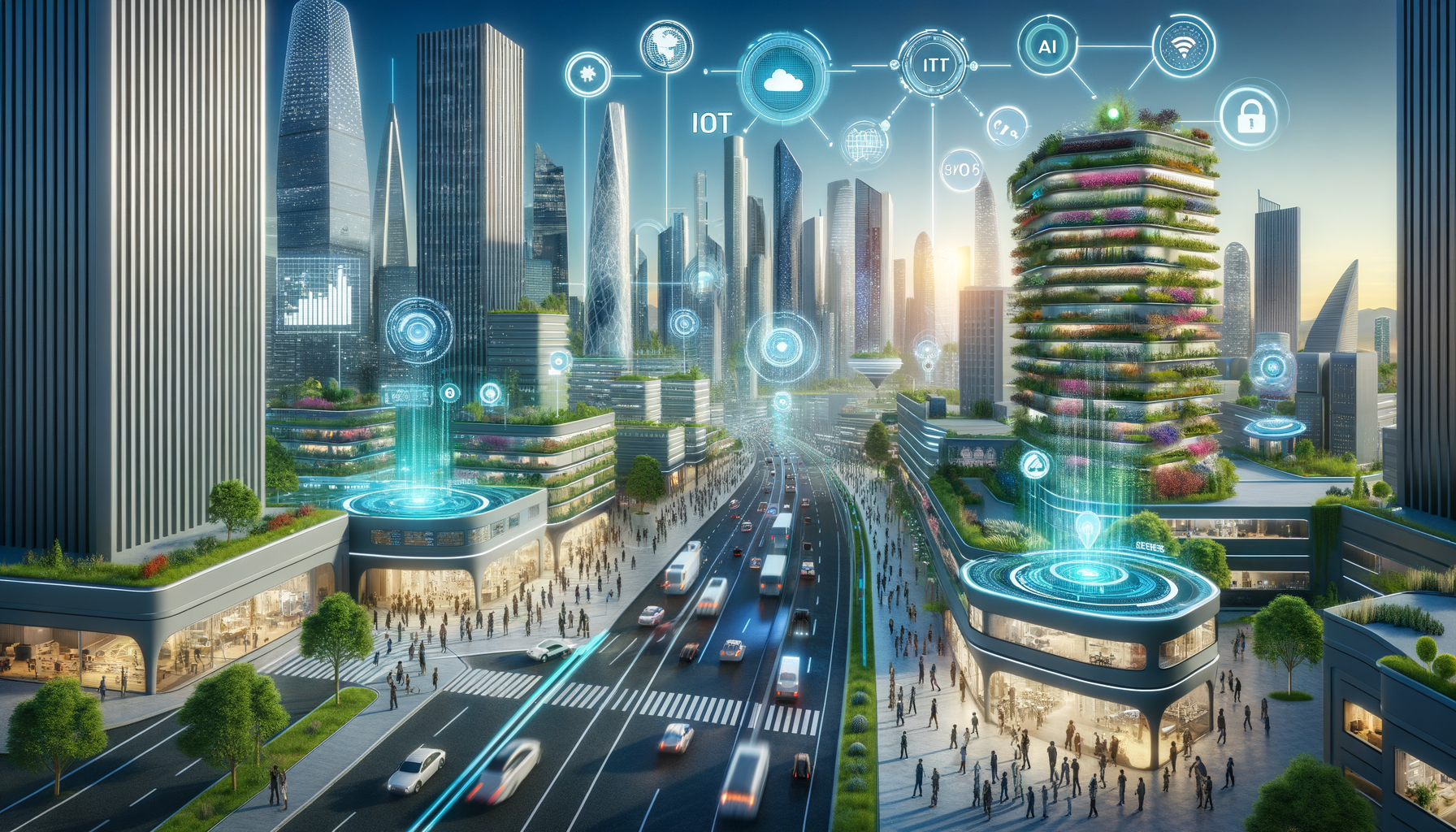### Introduction to Smart Cities and Their Significance
Smart cities utilize a network of sensors and technologies to collect data to enhance the efficiency and quality of urban life. These municipalities use Information and Communication Technologies (ICT) to boost operational efficiency, share information with the public, and improve both the quality and performance of urban services. The primary aim is to optimize city functions and promote economic growth while enhancing the quality of life for its citizens through smart technology ([TechTarget](https://www.techtarget.com/iotagenda/definition/smart-city), [National Geographic](https://www.nationalgeographic.org/article/smart-cities/)).
### The Role of Cutting-Edge Technologies
1. **IoT:** IoT sensors, deployed on traffic signals, roadways, and vehicles, collect data on traffic patterns, congestion, and accidents. This information is pivotal for optimizing traffic flow, reducing congestions, and enhancing road safety ([Rishabh Software](https://www.rishabhsoft.com/blog/iot-in-smart-cities-applications-benefits)).
2. **AI:** AI is crucial in urban development for analyzing vast amounts of data collected from various sources, including IoT devices. This analysis aids in making informed decisions on traffic management, energy distribution, and emergency response systems.
3. **Big Data Analytics:** Big data analytics plays a significant role by processing and analyzing the large volumes of data generated by urban activities. This data is then used to improve public services, reduce costs, and enhance citizens’ quality of life through predictive analytics and improved decision-making processes.
### Examples of Smart City Projects
While specific examples with detailed quantitative data were not obtained in this phase, numerous sources highlight successful smart city initiatives globally. These projects typically emphasize the integration of ICT and IoT technologies to improve urban infrastructure, manage traffic flows, enhance public safety, and streamline waste management and energy consumption.
### Benefits of Smart Cities
The key benefits include improved public services, enhanced sustainability, and increased quality of life for residents. Smart technologies allow for the provision of safety measures and early warning for incidents like floods and hurricanes, thereby significantly contributing to urban development and safety ([TWI Global](https://www.twi-global.com/technical-knowledge/faqs/what-is-a-smart-city)).
### Challenges in Implementing Smart Cities
Key challenges include privacy concerns, the digital divide, and the need for substantial investment. Privacy issues arise from the extensive data collection activities inherent to smart city technologies. The digital divide refers to the disparities in access to these technologies among different socioeconomic groups, potentially widening inequality gaps. Moreover, the transformation into a smart city demands significant financial and human resource investments, posing a considerable challenge for many municipalities.
### Future Trends and Emerging Technologies
Though specific future trends were not identified in this brief research summary, it is clear that emerging technologies such as 5G, blockchain, and more sophisticated AI and IoT solutions will continue to drive the evolution
